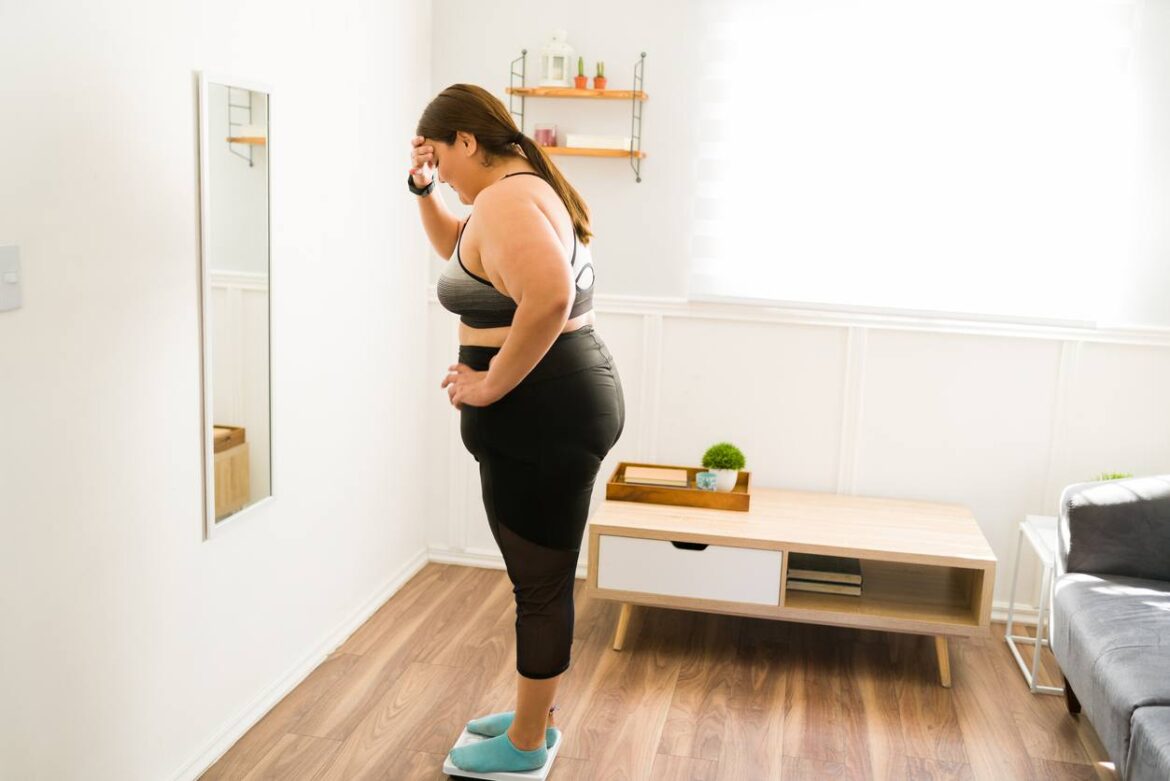Introduction
When To Take Naltrexone For Weight Loss: Naltrexone, a medication primarily known for its role in treating addiction to opioids and alcohol, has recently gained attention for its potential as a tool in the battle against obesity. Weight management is a complex and multifaceted challenge, and while lifestyle changes remain the cornerstone of any effective weight loss strategy, pharmaceutical interventions like naltrexone are being explored as adjuncts to help individuals achieve and maintain a healthier body weight.
Naltrexone works by blocking the effects of endorphins, natural chemicals in the brain that are associated with pleasure and reward. By doing so, it diminishes the reinforcing effects of food, particularly high-calorie, highly palatable foods, and reduces the craving for them. This can be a valuable asset for individuals struggling with overeating and food addiction. The question of when to take naltrexone for weight loss is not straightforward and should be approached with caution. Generally, it’s essential to consult with a healthcare professional before considering naltrexone as a weight loss aid.
They can assess your unique circumstances, medical history, and weight loss goals to determine if naltrexone is a suitable option for you. Timing is crucial when taking naltrexone for weight loss. It’s often to take the medication before meals to maximize its effectiveness in curbing appetite and reducing cravings. However, the precise timing and dosage should be determined by your healthcare provider to ensure safety and optimal results.

How do you take naltrexone for weight loss?
The dosing of naltrexone/bupropion must be titrated. In week 1, patients should take one 8/90-mg tablet once a day in the morning with a low-fat meal. In week 2, they should increase the daily dosage to one tablet in the morning and one tablet in the evening.
Weight Loss: Some individuals have reported modest weight loss while taking naltrexone. However, the effectiveness can vary from person to person, and it is not a guaranteed solution for everyone.
Potential Side Effects: Naltrexone may cause side effects, including nausea, headache, insomnia, and digestive issues. These side effects are generally mild and tend to subside with time.
Complementary Lifestyle Changes: Naltrexone should be used as part of a comprehensive weight loss plan that includes a balanced diet, regular physical activity, and behavior modification. It is not a standalone solution.
Medical Supervision: It’s crucial to consult with a healthcare provider before starting naltrexone for weight loss. They can assess whether it’s an appropriate option for you, monitor your progress, and make any necessary adjustments.
What is the best time of day to take naltrexone?
This is because Naltrexone decreases the release of endorphins (or feel-good hormones) by suppressing opioid activity. As a result, the body may not be able to adequately relax for sleep. So, taking Naltrexone in the morning may better suit users who experience difficulty sleeping.
Purpose of Medication
If you are taking naltrexone for addiction treatment, it is generally to take it in the morning to help reduce cravings and prevent relapse during the day.
If you are using naltrexone for weight loss or other conditions, the timing can be more flexible. Some individuals find it convenient to take it in the morning to align with their daily routine, while others prefer taking it at a different time that suits them.
Side Effects and Tolerance
Some people experience side effects, such as nausea or dizziness, when they first start taking naltrexone. If this occurs, adjusting the timing of your dose or taking it with food may help mitigate these side effects.
Consistency
Regardless of the specific time you choose, it’s essential to take naltrexone consistently. This helps maintain steady levels of the medication in your system and improves its effectiveness.
Consulting Your Healthcare Provider
Ultimately, the best time to take naltrexone can vary from person to person and depend on individual preferences and lifestyle. Consulting with your healthcare provider is crucial to determine the most suitable timing for your specific situation.
Is naltrexone better taken at night?
Bottom Line. The manufacturer does not specify if you should take naltrexone tablets in the morning or at night. Take naltrexone exactly as your doctor orders. Many patients take their medication in the morning to help affirm their continued treatment success for either opioid use disorder or alcohol use disorder.
Reducing Side Effects
Some people may experience side effects, such as nausea or dizziness, when starting naltrexone. Taking it at night might help mitigate these side effects as individuals sleep through the initial period of medication activity.
Lifestyle and Routine
The choice of timing should align with an individual’s daily routine and lifestyle. For those who have a preference for nighttime medications or find it easier to take their medication in the evening, taking naltrexone at night can be a practical choice.
Purpose of Medication
If naltrexone is prescribed for alcohol or opioid dependence, morning dosing may be more common to provide support throughout the day. However, XR naltrexone can provide coverage even with evening dosing.
Consulting Your Healthcare Provider
Deciding on the best time to take naltrexone should involve a discussion with your healthcare provider. They can consider your specific condition, lifestyle, and any potential side effects to help determine the most appropriate timing.
Should I take naltrexone on an empty stomach?
Naltrexone may be taken with food or antacids if stomach upset occurs. A urine test should be done to check for recent opiate drug use.
Immediate-Release (IR) Naltrexone
IR naltrexone is typically taken once daily. While it can be taken with or without food, some individuals may experience nausea when taking it on an empty stomach. If you find that IR naltrexone upsets your stomach, taking it with a light meal or a snack may help reduce this side effect.
Extended-Release (XR) Naltrexone
XR naltrexone is designed to provide a sustained release of the medication over a 24-hour period. This formulation is often taken once a month as an injection, making food intake at the time of administration less relevant. However, if you’re taking XR naltrexone in pill form, it is generally to take it with or without food, based on your preference.
Minimizing Side Effects
Nausea is a common side effect associated with naltrexone, especially when first starting the medication. If you experience nausea, experimenting with different food intake routines (before, with, or after meals) can help identify the approach that minimizes this side effect for you.
Patient Comfort and Compliance
The choice to take naltrexone with or without food may also depend on your personal comfort and routine. Some individuals prefer taking medications with a meal to make it a part of their daily routine, while others may opt for greater flexibility in dosing.
Consulting Your Healthcare Provider
Always consult with your healthcare provider regarding the best way to take naltrexone. They can provide personalized guidance based on your specific needs and any potential interactions with other medications.
Can I take naltrexone alone for weight loss?
People have begun taking low-dose naltrexone (Revia) or a combination naltrexone/bupropion formula in order to lose weight. Naltrexone/bupropion has been FDA-approved for weight loss in some patients, whereas naltrexone on its own has not been approved and is considered off-label.
Limited Evidence for Effectiveness
While some studies have suggested that naltrexone may have a modest impact on weight loss, the evidence is not robust enough to recommend it as a standalone treatment for obesity. Weight loss is a complex process influenced by various factors, including diet, physical activity, genetics, and metabolism. Naltrexone alone may not address all these factors adequately.
Individual Variation
The effectiveness of naltrexone for weight loss can vary significantly from person to person. Some individuals may experience reduced cravings for high-calorie foods, while others may not notice significant changes in their eating behavior.
Comprehensive Approach
Weight loss is most successful when approached comprehensively. A combination of a balanced diet, regular physical activity, behavior modification, and potentially medication, when prescribed by a healthcare provider, is often more effective than relying solely on a single medication like naltrexone.
Behavioral Changes
Naltrexone may be more beneficial when used in conjunction with behavior modification therapy or counseling. These approaches can help individuals develop healthier eating habits and address the psychological aspects of overeating.
Consulting a Healthcare Provider
Before considering naltrexone or any medication for weight loss, it is essential to consult with a healthcare provider. They can assess your specific needs, underlying health conditions, and provide guidance on the most appropriate treatment plan, which may include lifestyle changes, dietary modifications, or other medications.
Has anyone lost weight with naltrexone?
The results of several studies show that the combination of Naltrexone and Bupropion is effective. Patients reported they control and manage their eating better after utilizing this combination. It showed weight loss results towards the end of the studies.
Case 1: Mary’s Journey to Weight Loss
Mary, a 42-year-old woman, had struggled with obesity for most of her adult life. Despite multiple attempts to lose weight through diet and exercise, she found herself constantly battling food cravings and emotional eating. Her healthcare provider naltrexone to help curb her cravings for high-calorie foods. Over the course of a year, Mary lost 30 pounds while taking naltrexone. She credited the medication with reducing her desire for unhealthy foods and helping her make better dietary choices.
Case 2: John’s Success in Overcoming Binge Eating
John, a 35-year-old man, had a history of binge eating disorder that contributed to his weight gain. He sought help from a therapist who specialized in eating disorders, and together they decided to incorporate naltrexone into his treatment plan. Naltrexone helped reduce the rewarding effects of overeating, making it easier for John to control his impulses. He gradually lost 40 pounds over the course of a year and credited naltrexone as a valuable tool in his recovery.
Case 3: Sarah’s Experience with Naltrexone and Lifestyle Changes
Sarah, a 29-year-old woman, was prescribed naltrexone by her healthcare provider as part of a comprehensive weight loss plan. She combined the medication with a balanced diet and regular exercise. Naltrexone helped Sarah manage her food cravings, allowing her to stick to her healthy eating plan. Over the course of eight months, she lost 25 pounds, and her improved self-esteem and energy levels were significant motivators for her.
Does naltrexone work immediately?
Oral naltrexone absorbs quickly and begins to work within an hour after consumption. The effects of the 50-mg oral tablet can last for 24 to 36 hours. The duration of higher doses is longer lasting, with 100 mg lasting 48 hours and 150 mg lasting 72 hours. Naltrexone usually reaches its peak within one hour of dosing.
Alcohol and Opioid Dependence
In the context of alcohol or opioid dependence, naltrexone’s effects are relatively rapid. When taken as prescribed, it can begin blocking the rewarding effects of alcohol or opioids within a few hours. This can help reduce cravings and the reinforcing effects of these substances, supporting the process of recovery.
Gradual Improvement
Naltrexone is not a medication that produces sudden, profound changes in behavior or cravings. Instead, it often works gradually over time. Individuals may find that they are better able to resist cravings, make healthier choices, or experience reduced impulsivity as they continue taking the medication consistently.
Consulting a Healthcare Provider
It’s essential to consult with a healthcare provider when starting naltrexone or any medication. They can provide guidance on the expected timeline for effects and make any necessary adjustments to the treatment plan.
Do you take naltrexone at night or in the morning?
Adults—At first, one tablet in the morning taken on week 1. Your doctor will increase your dose to one tablet in the morning and one tablet in the evening on week 2. Then, two tablets in the morning and one tablet in the evening on week 3.
Individual Tolerance: Some people may experience side effects, such as nausea or dizziness, when they first start taking naltrexone. If this occurs, adjusting the timing of your dose or taking it with food may help mitigate these side effects.
Lifestyle and Routine: The choice of when to take naltrexone should align with your daily routine and lifestyle. Some individuals prefer taking medications in the morning, while others may find it more convenient at night.
Consulting Your Healthcare Provider: The timing of naltrexone dosing should be discussed with your healthcare provider. They can provide personalized recommendations based on your specific condition, medication regimen, and potential interactions with other medications.

Conclusion
It is essential to emphasize that naltrexone should never be taken for weight loss without the guidance and supervision of a qualified healthcare provider. The decision to use naltrexone as a weight loss aid should be based on a thorough assessment of an individual’s unique circumstances, including their medical history, current health status, and weight loss goals.
The timing of naltrexone intake is typically determined by healthcare professionals who take into account the medication’s pharmacokinetics and the patient’s specific needs. In many cases, it is to take naltrexone before meals to harness its appetite-suppressing effects effectively. This timing can help reduce cravings, control portion sizes, and promote healthier eating habits. Naltrexone should always be viewed as part of a comprehensive weight management strategy that includes dietary modifications, increased physical activity, and behavioral changes.
While naltrexone can aid in appetite control, it is not a standalone solution and should complement a commitment to adopting a healthier lifestyle. Regular follow-up appointments with a healthcare provider are crucial when using naltrexone for weight loss. These check-ins allow for the monitoring of progress, assessment of any potential side effects, and adjustments to the treatment plan as needed. It is essential to maintain open communication with your healthcare provider throughout your weight loss journey to ensure both safety and effectiveness.

